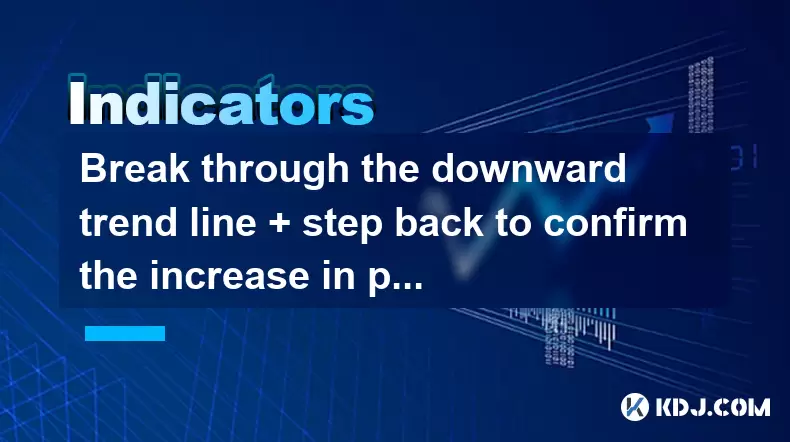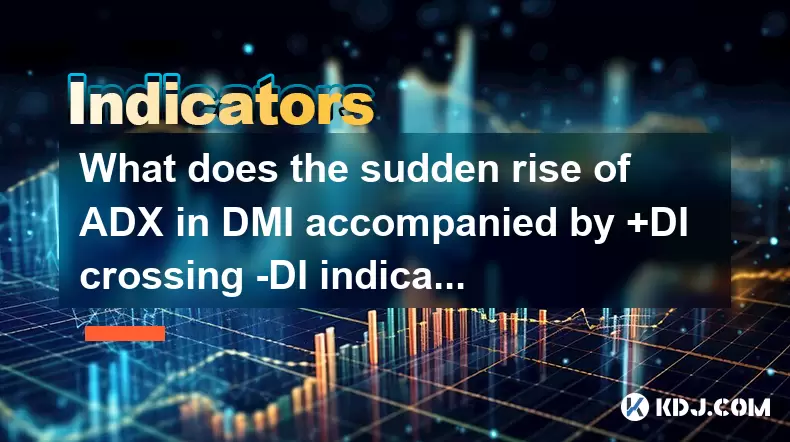-
 Bitcoin
Bitcoin $117400
1.93% -
 Ethereum
Ethereum $3747
3.63% -
 XRP
XRP $3.157
3.09% -
 Tether USDt
Tether USDt $1.000
0.02% -
 BNB
BNB $783.3
3.19% -
 Solana
Solana $186.6
5.64% -
 USDC
USDC $0.9999
0.01% -
 Dogecoin
Dogecoin $0.2375
5.42% -
 TRON
TRON $0.3185
1.32% -
 Cardano
Cardano $0.8191
3.28% -
 Hyperliquid
Hyperliquid $44.43
5.76% -
 Sui
Sui $3.995
9.84% -
 Stellar
Stellar $0.4396
6.27% -
 Chainlink
Chainlink $18.26
4.83% -
 Hedera
Hedera $0.2646
11.88% -
 Bitcoin Cash
Bitcoin Cash $553.5
5.55% -
 Avalanche
Avalanche $24.13
4.73% -
 Litecoin
Litecoin $113.3
1.77% -
 UNUS SED LEO
UNUS SED LEO $8.975
0.11% -
 Shiba Inu
Shiba Inu $0.00001405
5.69% -
 Toncoin
Toncoin $3.319
7.46% -
 Ethena USDe
Ethena USDe $1.001
0.02% -
 Uniswap
Uniswap $10.44
4.98% -
 Polkadot
Polkadot $4.098
4.31% -
 Monero
Monero $328.6
1.87% -
 Dai
Dai $1.000
0.01% -
 Bitget Token
Bitget Token $4.561
2.76% -
 Pepe
Pepe $0.00001261
5.29% -
 Aave
Aave $296.8
4.02% -
 Cronos
Cronos $0.1335
3.28%
Break through the downward trend line + step back to confirm the increase in position
A breakout above a downward trend line with high volume and a bullish close, followed by a pullback that holds as support, signals a high-probability reversal in crypto’s bearish momentum.
Jul 25, 2025 at 05:42 pm

Understanding the Downward Trend Line in Cryptocurrency Trading
In technical analysis, a downward trend line is a critical tool used to identify bearish market momentum. It is formed by connecting two or more price highs with a straight line, indicating resistance where sellers dominate. When the price consistently makes lower highs, the trend line slopes downward, signaling a bearish market structure. Traders monitor these lines closely because a break through the downward trend line may suggest a potential reversal in market sentiment. This break occurs when the price closes above the trend line, ideally with increased volume, indicating that buyers are overpowering sellers. It's essential to confirm that the break is not a false signal by checking for candlestick patterns, volume spikes, and alignment with other technical indicators such as RSI or MACD.
Identifying a Valid Breakthrough of the Trend Line
Not every touch above the trend line constitutes a valid breakout. To determine if the break through the downward trend line is genuine, several conditions must be met.
- The price must close decisively above the trend line, not just touch it intraday.
- The breakout candle should exhibit strong bullish momentum, such as a long green candle or a bullish engulfing pattern.
- Volume during the breakout should be significantly higher than average, confirming institutional or large trader participation.
- The breakout should align with broader market indicators—such as moving averages crossing upward or RSI moving above 50.
Using tools like TradingView, traders can draw the trend line manually by selecting the "Trend Line" tool and connecting at least two descending peaks. Once the price closes above this line, the next step is to wait for confirmation before entering a position.
Step Back to Confirm: The Pullback Strategy
After a breakout, the market often pulls back to retest the former resistance level, which now acts as support. This phase is known as step back to confirm. It provides a second opportunity to enter a long position with reduced risk. During this pullback:
- Watch for the price to approach the broken trend line.
- Look for bullish reversal patterns such as hammer candles, bullish engulfing, or morning star formations.
- Ensure that volume decreases during the pullback and increases again on the bounce, signaling renewed buying interest.
This confirmation phase is crucial because it filters out false breakouts. If the price fails to hold above the former trend line and drops back below, the breakout is invalidated. However, if it bounces cleanly, the probability of a sustained upward move increases significantly.
Executing the Increase in Position
Once the pullback confirms the breakout, traders can proceed to increase position with confidence. The following steps outline a precise entry strategy:
- Set the entry point slightly above the pullback candle’s high to avoid being stopped out by minor wicks.
- Place a stop-loss just below the low of the pullback candle or below the trend line to limit downside risk.
- Use a risk-reward ratio of at least 1:2—meaning the potential profit should be twice the potential loss.
- Consider scaling in: open a partial position at the initial breakout and add more during the confirmed pullback.
For example, if trading Bitcoin (BTC) and the price breaks above a downward trend line at $60,000, then pulls back to $60,500 and forms a hammer candle, a trader might enter at $60,800 with a stop-loss at $59,900. This setup balances risk while capitalizing on momentum.
Using Indicators to Strengthen Confirmation
While price action is paramount, combining it with technical indicators enhances the reliability of the break through the downward trend line + step back to confirm strategy.
- Relative Strength Index (RSI): Should move above 50 during the breakout, indicating strengthening momentum.
- Moving Averages: A breakout above the 50-day or 200-day MA adds validity. A golden cross (50 MA crossing above 200 MA) further supports bullish sentiment.
- MACD: A bullish crossover (MACD line crossing above signal line) during or after the breakout confirms upward momentum.
- Volume Profile: High volume at the breakout level shows strong acceptance of the new price zone.
Traders should avoid overloading charts with too many indicators. Instead, select two or three that align with their trading style and use them consistently.
Common Pitfalls and How to Avoid Them
Even with a solid strategy, traders often fall into traps that undermine their success. One major mistake is entering before confirmation—jumping in as soon as the price touches the trend line without waiting for the pullback. Another is ignoring the broader market context; a breakout in a single altcoin may fail if Bitcoin is in a strong downtrend.
- Avoid trading during low-volume periods, such as weekends, where price movements can be erratic.
- Never place a market order during volatile breakout events—use limit orders to control entry price.
- Always check for upcoming news or events that could cause sudden reversals, such as regulatory announcements or exchange outages.
By maintaining discipline and adhering to the confirmation process, traders can significantly improve their win rate.
Frequently Asked Questions
How do I distinguish between a true breakout and a fakeout?
A true breakout is confirmed by a close above the trend line with high volume and a follow-up bullish candle. A fakeout occurs when the price briefly moves above but quickly reverses and closes below, often with low volume. The pullback test is key—real breakouts hold support during retests, while fakeouts break below again.
Can this strategy be applied to all cryptocurrencies?
Yes, the break through the downward trend line + step back to confirm method works across major cryptocurrencies like Ethereum (ETH), Binance Coin (BNB), and even smaller altcoins. However, it performs best in assets with sufficient liquidity and trading volume to prevent manipulation.
What time frame is best for this strategy?
The daily chart provides the most reliable signals for this approach, especially for position traders. Swing traders may use the 4-hour chart, but they must confirm with higher time frames to avoid noise. Lower time frames like 15-minute charts are prone to false signals.
Should I always wait for the pullback, or can I enter at the initial breakout?
While entering at the breakout captures early momentum, it carries higher risk. Waiting for the step back to confirm reduces risk and improves entry precision. Aggressive traders may allocate a small portion at breakout and add more during pullback.
Disclaimer:info@kdj.com
The information provided is not trading advice. kdj.com does not assume any responsibility for any investments made based on the information provided in this article. Cryptocurrencies are highly volatile and it is highly recommended that you invest with caution after thorough research!
If you believe that the content used on this website infringes your copyright, please contact us immediately (info@kdj.com) and we will delete it promptly.
- Wall Street's Bitcoin Bonanza: ETF Filings Signal Crypto's Coming-Out Party
- 2025-07-26 15:10:12
- Bitcoin, Cynthia Lummis, and Freedom Money: A New York Perspective
- 2025-07-26 15:10:12
- Bitcoin, Altcoin Season, and Market Shift: What's the Deal?
- 2025-07-26 14:30:12
- PEPE, Altcoins, and Bitcoin: Navigating the Meme Coin Mania in 2025
- 2025-07-26 14:30:12
- UAE's Digital Asset Revolution: Stablecoin Regulations Take Center Stage
- 2025-07-26 10:40:11
- Whale Transactions and ENA Token: Decoding the Withdrawal Dynamics
- 2025-07-26 14:50:12
Related knowledge

What does it mean that the rebound is blocked after the moving average is arranged in a short position for the first time?
Jul 26,2025 at 10:51am
Understanding the Short-Term Moving Average ConfigurationWhen traders refer to a 'short position arrangement' in moving averages, they are describing ...

What does it mean when the price rises along the 5-day moving average for five consecutive days?
Jul 26,2025 at 08:07am
Understanding the 5-Day Moving Average in Cryptocurrency TradingThe 5-day moving average (5DMA) is a widely used technical indicator in cryptocurrency...

What does it mean when the price breaks through the 60-day moving average with a large volume but shrinks the next day?
Jul 26,2025 at 06:01am
Understanding the 60-Day Moving Average in Cryptocurrency TradingThe 60-day moving average (60DMA) is a widely used technical indicator in the cryptoc...

What does the sudden rise of ADX in DMI accompanied by +DI crossing -DI indicate?
Jul 26,2025 at 01:21pm
Understanding the DMI and Its Core ComponentsThe Directional Movement Index (DMI) is a technical analysis tool used to determine the presence and stre...

What does it mean when OBV continues to hit new highs but the price is stagnant?
Jul 26,2025 at 09:57am
Understanding the On-Balance Volume (OBV) IndicatorThe On-Balance Volume (OBV) is a technical analysis indicator that uses volume flow to predict chan...

What does the golden cross of EMA12 and EMA26 but the low trading volume reflect?
Jul 26,2025 at 06:44am
Understanding the Golden Cross in EMA12 and EMA26The golden cross is a widely recognized technical indicator in the cryptocurrency market, signaling a...

What does it mean that the rebound is blocked after the moving average is arranged in a short position for the first time?
Jul 26,2025 at 10:51am
Understanding the Short-Term Moving Average ConfigurationWhen traders refer to a 'short position arrangement' in moving averages, they are describing ...

What does it mean when the price rises along the 5-day moving average for five consecutive days?
Jul 26,2025 at 08:07am
Understanding the 5-Day Moving Average in Cryptocurrency TradingThe 5-day moving average (5DMA) is a widely used technical indicator in cryptocurrency...

What does it mean when the price breaks through the 60-day moving average with a large volume but shrinks the next day?
Jul 26,2025 at 06:01am
Understanding the 60-Day Moving Average in Cryptocurrency TradingThe 60-day moving average (60DMA) is a widely used technical indicator in the cryptoc...

What does the sudden rise of ADX in DMI accompanied by +DI crossing -DI indicate?
Jul 26,2025 at 01:21pm
Understanding the DMI and Its Core ComponentsThe Directional Movement Index (DMI) is a technical analysis tool used to determine the presence and stre...

What does it mean when OBV continues to hit new highs but the price is stagnant?
Jul 26,2025 at 09:57am
Understanding the On-Balance Volume (OBV) IndicatorThe On-Balance Volume (OBV) is a technical analysis indicator that uses volume flow to predict chan...

What does the golden cross of EMA12 and EMA26 but the low trading volume reflect?
Jul 26,2025 at 06:44am
Understanding the Golden Cross in EMA12 and EMA26The golden cross is a widely recognized technical indicator in the cryptocurrency market, signaling a...
See all articles

























































































